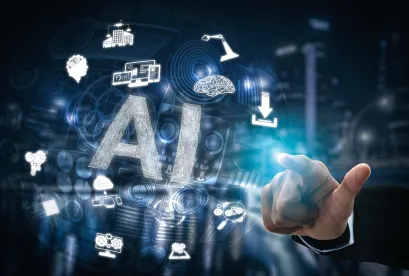It is no secret that legislators and regulatory agencies have taken note of companies’ increasing reliance on artificial intelligence (“AI”). In the employment context, vendors market AI as an efficiency tool that can streamline HR processes and guard against human bias and discrimination. But as we have previously blogged, undisciplined use of AI may accelerate or introduce discrimination into the workplace.
Earlier this month, the White House waded into this discussion. Dubbed the “Blueprint for an AI Bill of Rights: Making Automated Systems Work for the American People,” the White House Office of Science and Technology Policy identified five principles to “guide the design, use, and deployment of automated systems to protect the American public in the age of artificial intelligence.”
Although the blueprint has no binding legal effect, it is a bellwether document that celebrates recent efforts to regulate AI and encourages AI designers, regulators, and customers to take a close look at the negative side effects that AI may have on the American public and take steps to mitigate those impacts.
The Five Principles
The blueprint is organized into five separate, but related principles:
(1) Safe and Effective Systems;
(2) Algorithmic Discrimination Protections;
(3) Data Privacy;
(4) Notice and Explanation; and
(5) Human Alternatives, Consideration & Fallback.
For each principle, the document outlines associated human protections that should guide the design and use of AI. The general theme that emerges in each section is that AI should be designed with the human experience in mind, making sure that any use of AI, 1) does not endanger human life; 2) does not subject humans to discriminatory treatment; 3) protects human privacy interests; 4) embraces transparency; and 5) allows humans the opportunity to opt out of AI-driven systems.
Algorithmic Discrimination Protections
Of particular relevance to employers is the section on algorithmic discrimination protections. The White House recognizes AI’s potential for innovation but explains that all AI systems must have “algorithmic discrimination protections built into their design, deployment, and ongoing use.” In support of these protections, the blueprint cites a real-world example of a hiring tool “that learned the features of a company’s employees (predominantly men) and rejected women applicants for spurious and discriminatory reasons.”
The White House lauds the EEOC’s recent technical assistance bulletin that explains how some employment-based AI tools can discriminate against individuals with disabilities in violation of the Americans with Disabilities Act. And it highlights industry-driven best practices that have been memorialized in the Algorithmic Bias Safeguards for the Workforce, a structured questionnaire that businesses can use when deciding whether to implement software designed to evaluate workers and applicants.
The blueprint outlines discrimination protection principles that we have seen implemented in various laws throughout the country. For example, the White House explains that AI tools should be monitored for discriminatory impacts and that the results of such audits “should be made public whenever possible to confirm these protections.” This is consistent with recent regulation in New York City set to take effect in January 2023 that will require auditing of AI tools used in the workplace.
Above all else, the blueprint emphasizes the need for both designers and users of AI technology to be mindful of discriminatory impacts on protected populations. It directs designers to build protections into the systems from unintentional proxy-based discrimination, and instructs vendors and customers to assess impacts and take active measures to mitigate discriminatory results.
What the Blueprint Means for Employers
Although the blueprint is not a binding document, it is symbolic of the increased focus that regulators have on the use of AI in all facets of life, including the workplace. Employers should be mindful of the principles expressed in the blueprint and should closely monitor developments in the law.





 />i
/>i


